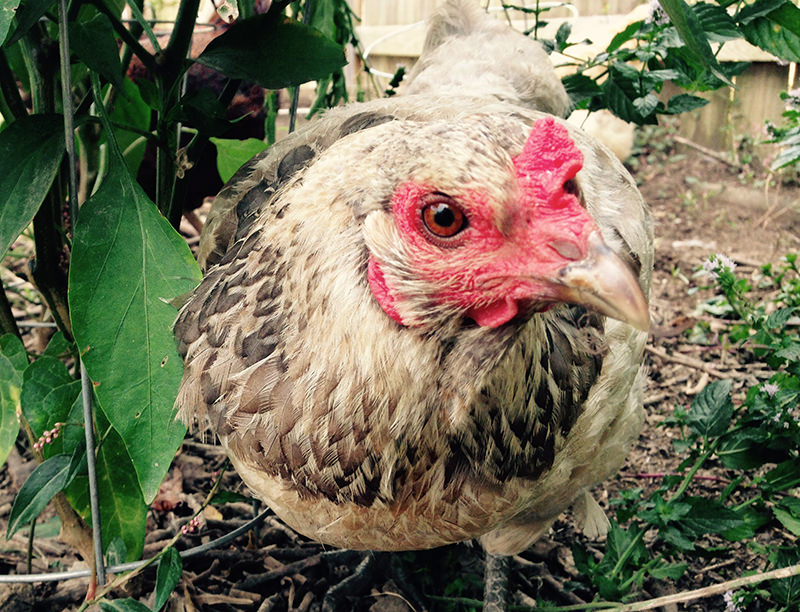During a vacation when I was a kid, I learned that seagulls were nicknamed “rats with wings.” It would be many more years before I learned that all birds are scavengers or foragers. On that vacation, my dad sprinkled hot sauce onto a French fry and threw it out of the car window to a begging seagull. The poor seagull lost its voice.
It’s that memory I revisited when I wrote a post here about the suspicious practice of adding hot pepper flakes to chicken feed to entice ovulation in point-of-lay pullets or declining old hens.
Adding hot peppers to my chicken feed doesn’t come to my mind when my girls slow down production—I think they deserve the break—but I did rethink their tolerance for capsaicin when I walked out to my jalapeño plants to find fruits pecked to nubs with exposed seeds. The plants have continued to produce too many for me to use, so there were plenty to share. Just then, my Easter Egger joined me, leaping and pecking to reach the higher peppers.

Rachel Hurd Anger
My soil conditions and the climate here in Louisville, Ky., must be perfect for growing peppers so hot they’re intolerable. I honestly cannot eat them. I grow the peppers for my dad, and I mail them periodically by the bagful. If intolerably hot peppers were my goal, I’d be thrilled. But it’s not, so the chickens eat them, and now no pepper is left behind. The flock loves them!
I’d considered that chickens must not have the single receptor that detects capsaicin, but what about the muted seagull? Can birds taste it or not?
Avian species, in fact, do have the receptor for capsaicin just like mammals. It’s called TRPV1, which is responsible for detecting some other pain sensory input, too. Whether the receptor is activated in a species determines if that species will taste the “hot” in peppers. Some birds, like the seagull, have an activated receptor, but others, like the chicken, do not.
Mammals with sensitive TRPV1 receptors, like rodents and many humans, avoid eating hot peppers because they will feel the pain of the heat. If they do eat them, their digestive systems will usually render the seeds unviable. However, in birds with inactivated TRPV1 receptors, their digestive systems are able to pass the hot pepper seeds with viability, successfully spreading the seeds and aiding in the plant’s reproduction.
It’s rumored that capsaicin will kill bacteria, but the claim doesn’t hold up in studies. However, capsaicin has been shown to disperse bacteria. In control groups, bacteria grew normally, but in capsaicin groups, it forced the same amount of bacteria into smaller, weaker groups. So while capsaicin isn’t a cure for anything, adding pepper flakes to a flock’s diet or growing peppers for chickens could aid them in fighting off bacterial infections. And because chickens can’t taste capsaicin, there’s no reason to worry that feeding hot peppers might hurt the flock.
Read more of Chicken Quarters »




